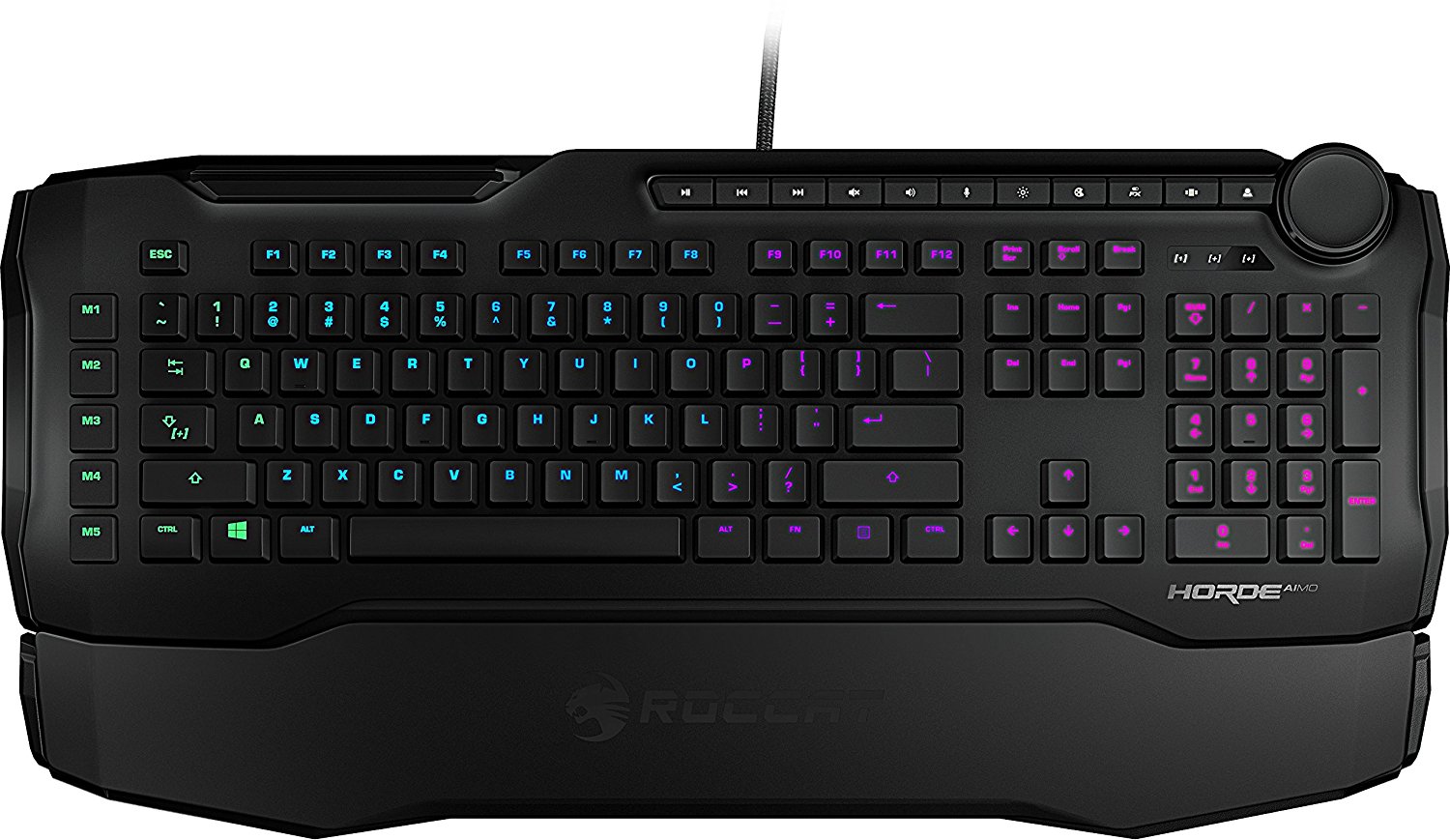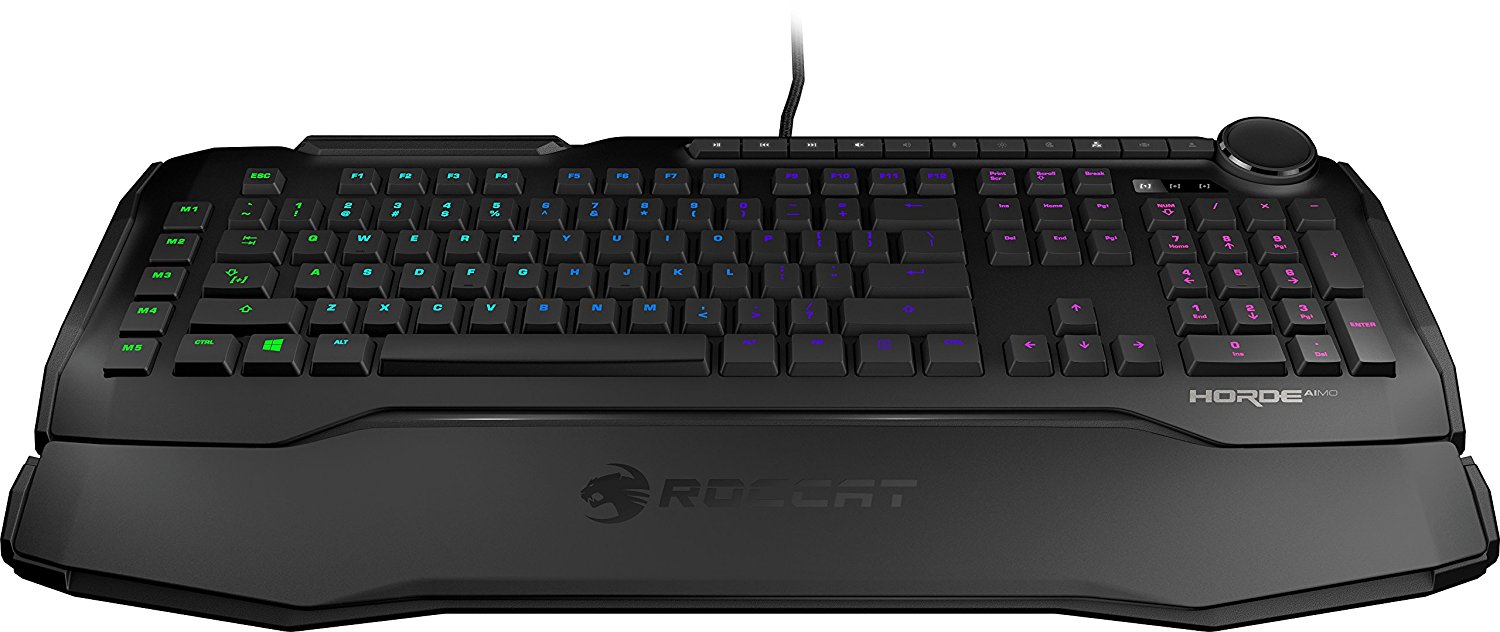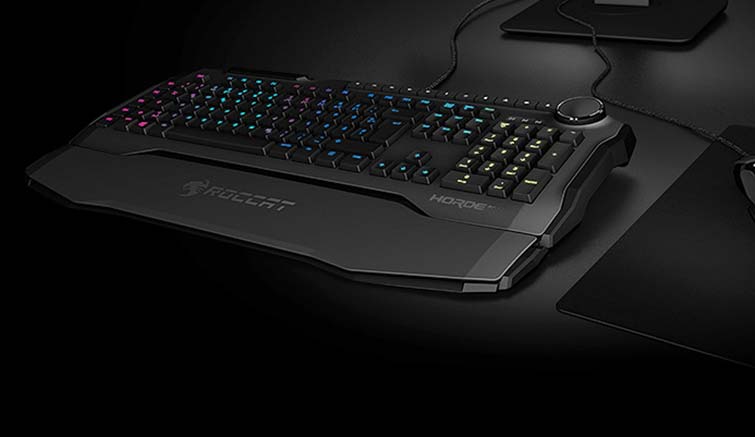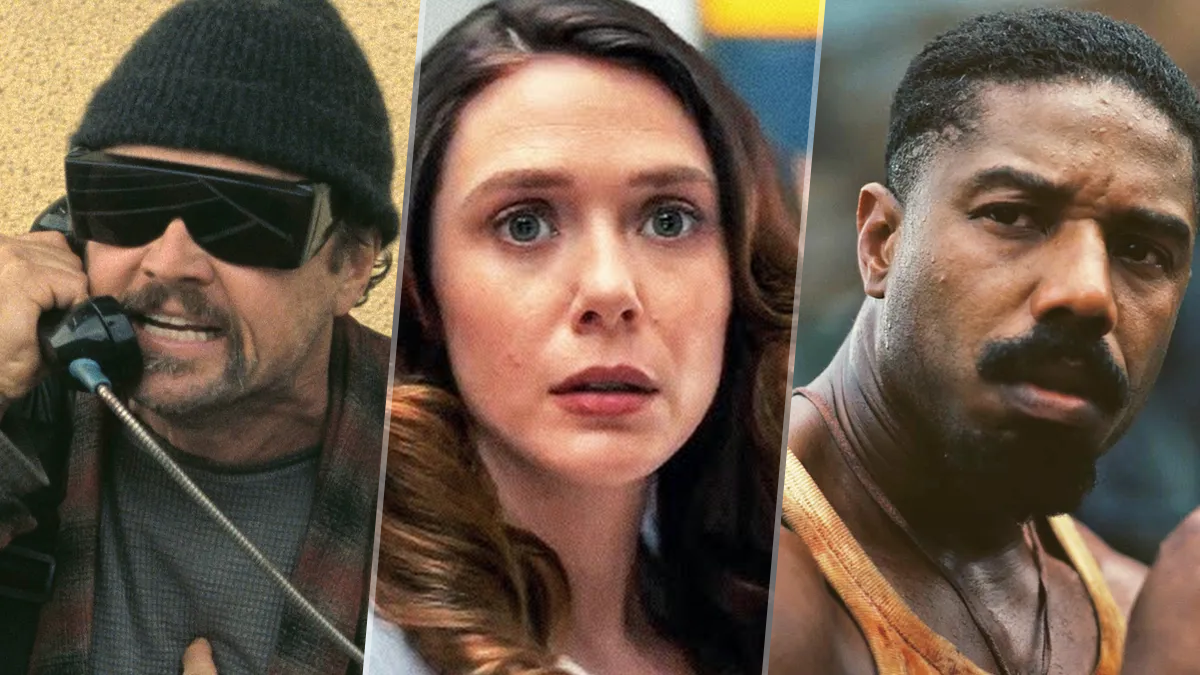Tom's Guide Verdict
Nearly every one of the Roccat Horde Aimo's features comes with a caveat, from half-baked hybrid keys to dim RGB lighting.
Pros
- +
Good typing and game performance
- +
Reprogrammable keys
- +
Intuitive software
Cons
- -
"Membranical" keys don't feel that good
- -
Overpriced
- -
Dim lighting
Why you can trust Tom's Guide
Whether we like it or not, membrane gaming keyboards are coming back. While they aren't ideal for gaming, they're far less expensive than a top-of-the-line mechanical model. Or at least, they should be.
The Roccat Horde Aimo ($100) delivers everything you'd expect from a premium-priced gaming keyboard: tactile keys, RGB backlighting, helpful extra buttons and robust software. Nearly every one of those features comes with a caveat, however.
The tactile keys are an awkward mechanical/membrane hybrid that doesn't feel any better than an office keyboard. The RGB backlighting looks dull and lifeless. The extra buttons are more complicated than they need to be. The software is still working out some annoying bugs.
Ultimately, it's hard to justify the Horde Aimo's high price tag, if only because you can get a much better mechanical keyboard for the same price — or cheaper.
Design
The Horde Aimo is enormous. Measuring about 18.5 x 9.0 inches, it takes up a considerable amount of desk real estate, rivaling other outsize keyboards like the Logitech G613. Granted, part of this is due to the Horde Aimo's removable wrist rest, which feels cheap and flimsy, but gets the job done.
The Aimo is not a very pretty keyboard. The all-black peripheral can't quite decide whether it wants to be sleek and angular, or soft and unobtrusive, resulting in a lot of rounded edges, asymmetrical flourishes and a general sense of imbalance.
The right side of the keyboard is positively jam-packed with extra keys; the left side feels almost barren, in spite of a few well-placed macro buttons. There's even what appears to be a pull-out phone caddy (previous Roccat keyboards have had these), but upon closer inspection, it doesn't actually do anything. There's also quite a bit of wasted space around the perimeter.
Get instant access to breaking news, the hottest reviews, great deals and helpful tips.
Keys
For $100, Roccat doesn't expect its fans to be content with simple membrane keys. Instead, it's introduced what it calls "membranical" keys: a nice way of saying that they're still membrane keys, but they have an extra layer that adds a tactile feel.
Although Roccat says you can actuate keys by pressing halfway down (as you could with a Cherry MX Brown or Logitech Romer-G switch), my co-workers and I found that the Horde Aimo wouldn't type unless we bottomed out. It's not uncomfortable, but it doesn't perform any differently than a traditional membrane key. If you ever hung out with your dad and his friends as a teenager, and they handed you a non-alcoholic beer, you know exactly how Roccat's membranical key feels.

Disappointing feel aside, the keys do work. On TypingTest.com, I scored 108 words per minute with four errors on the Horde Aimo, as opposed to 114 words per minute with five errors on my usual Logitech G810. It's not a tremendous difference, given how much experience I have with the G810, although the Horde Aimo keys felt much springier and less resistant than I'm used to.
MORE: Our Favorite Gaming Keyboards
There are five macro keys on the left. On the upper-right side of the keyboard, there's a very long row of buttons and an oversize dial. This isn't just for volume, as I thought it might be; the dial can control everything from media to the keyboard's color scheme to the RGB backlighting's brightness.
However, there's a lot of tedious pressing and unpressing of buttons, depending on what you want to control, and honestly, the software can handle it just as well. It's cool that Roccat wanted to experiment and use discrete keys for more than just media control, but I didn't get much use out of anything that didn't involve music.
If you ever hung out with your dad and his friends as a teenager, and they handed you a non-alcoholic beer, you know exactly how Roccat's membranical key feels.
The membranical keys are probably the single toughest selling point for the Horde Aimo. While it's true that you can't get an RGB mechanical keyboard for $100 (they go up to $180), you can get a monocolor, backlit mechanical keyboard for $100. And there's simply no way that the membranical keys can keep pace with high-quality switches from Cherry, Logitech, Razer and the like.
Features
In addition to controlling lighting, volume and so forth from the keyboard itself, you can also do so from the Roccat Swarm software. As I pointed out in my Khan Aimo review, the normally reliable Swarm is suffering from a few bugs at present, some of which can crash the program at inopportune times. (Although, to be fair, I guess there is no opportune time for a program to crash.)

Without rehashing the problem in exhaustive detail, the Swarm software is never quite sure whether you've updated to the latest version. This is a problem, since the software requires an update before it can download new firmware for the keyboard. Without firmware, you can't use the keyboard's extra features. The only way to address this problem (I won't say "solve") is to keep attempting to update the program and reloading when it crashes. It'll eventually work, at least for long enough to get the keyboard up and running.
Even with the brightness turned all the way up, the best I could see on the keyboard was a dull splash of color.
Assuming Swarm works as it's supposed to, the array of options is pretty good. You can reassign any key on the board, program macros, adjust lighting options and link individual games with different profiles. There's no on-the-fly macro recording, which may be a dealbreaker for hard-core MMO buffs, but otherwise, everything works fine.
MORE: Our Favorite Gaming Mice for Every Genre
However, the RGB lighting is not nearly as useful as it could be. Roccat touts its innovative Aimo system, which customizes lighting options on-the-fly depending on what game you're playing. In theory, it's a very cool feature, which makes RGB lighting more than just a pretty face. In practice, though, the Horde Aimo lighting is almost impossible to see in a well-lit room.
Even with the brightness turned all the way up, the best I could see on the keyboard was a dull splash of color. Side-by-side with a G810, the Horde Aimo barely looked lit at all. If your gaming nook is a concealed, shadowy space where mortal men fear to tread, the lighting will look very cool, full of splashy effects and a robust variety of blues, reds, pinks and greens. Otherwise, you may as well just turn it off, and that's a shame.
Performance
I put the Horde Aimo through its paces with StarCraft: Remastered, Overwatch, Final Fantasy XV and a handful of other games, and it handled everything I could throw at it just fine. While I didn't love how the keystrokes felt (see the Keys section), I was able to build Terran armies, guide Noctis and his party across Eos and command Zarya to bolster her teammates.
Performance-wise, there wasn't much to set the Horde Aimo apart from a decently responsive office keyboard — but on the other hand, I didn't really perform any worse than I would have with a high-end mechanical model. Perhaps a Horde Aimo wouldn't suit players aiming for the top of the competitive ranks, but for everyday play, it gets the job done.
Performance-wise, there wasn't much to set the Horde Aimo apart from a decently responsive office keyboard.
Bottom Line
The Roccat Horde Aimo has good in-game performance, which is definitely the most important aspect of a gaming keyboard. Beyond that, though, there's not much to recommend. It's overpriced; it's unattractive; and it's simply not as good as mechanical models you can buy for the same amount of money.

If and when the Horde Aimo shaves a few dozen dollars off its price, it could be worth a purchase, if you really, truly don't have the money for a slightly older mechanical keyboard. If you're looking to drop $100 on a gaming keyboard, though, at least try out a mechanical design and see what individual key-switches can do for you.
Credit: Roccat

Marshall Honorof was a senior editor for Tom's Guide, overseeing the site's coverage of gaming hardware and software. He comes from a science writing background, having studied paleomammalogy, biological anthropology, and the history of science and technology. After hours, you can find him practicing taekwondo or doing deep dives on classic sci-fi.

